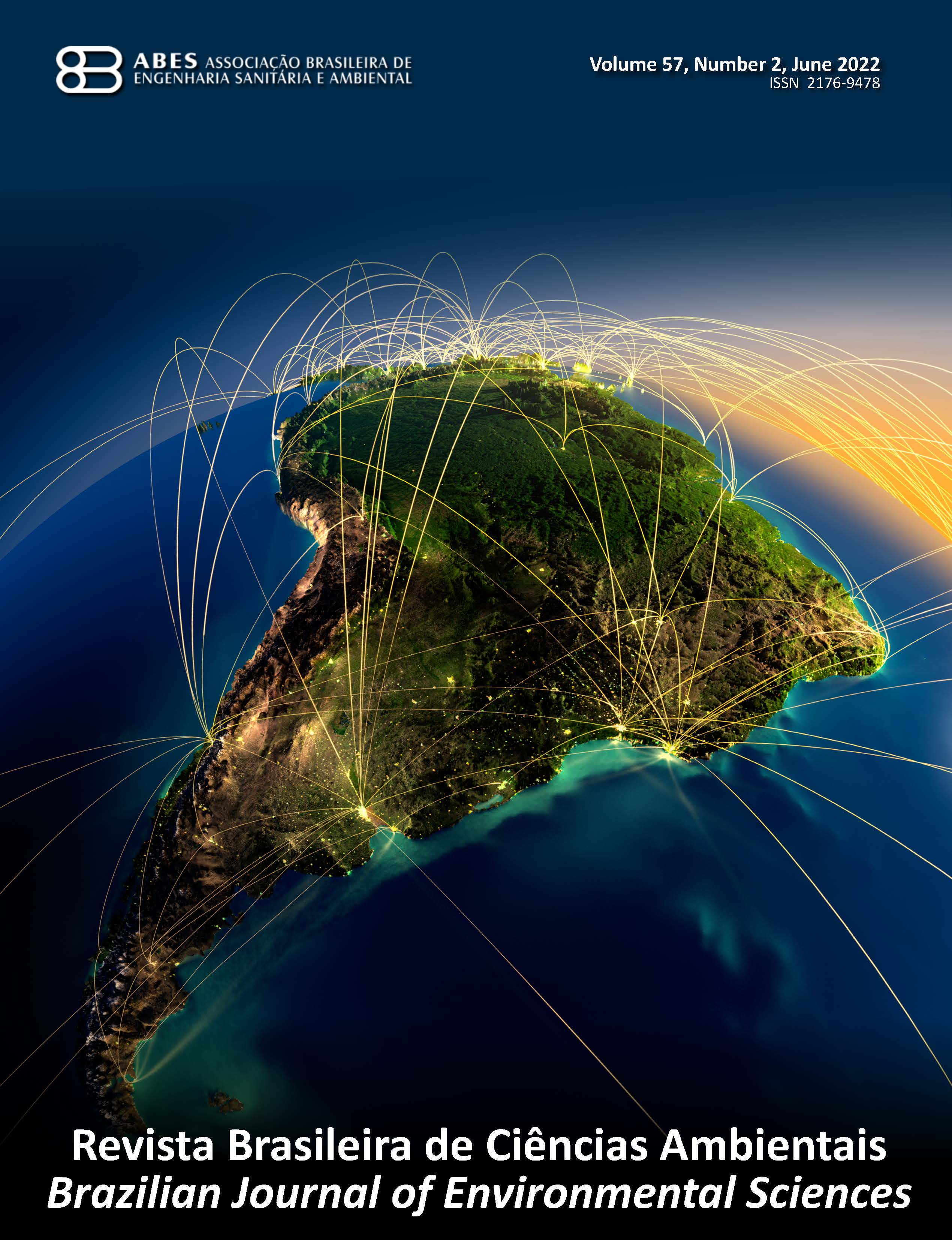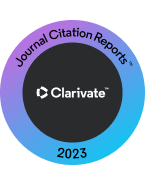Assessing circular economy in Brazilian industries through the analytical hierarchy process
DOI:
https://doi.org/10.5327/Z2176-94781277Keywords:
circularity index; circularity levels; circularity measurement; sustainable development.Abstract
Sustainable development has been pursued by organizations around the world ever since environmental and social issues were introduced into institutional agendas. In the various sectors of the economy, the factors that influence sustainable decisions are multidisciplinary and systemic, and address the concept of Circular Economy (CE). This study aimed to develop a method to measure the level of commitment of companies and sectors to CE. The method allows investigating institutional factors associated with sustainable development and assessing the depth of CE practices. A circularity index is originated that can assist decision makers in the development of specific strategies, investment plans, and policies to guide organizations towards the achievement of a CE. The proposed method was then applied to 75 Brazilian companies recognized for their sustainability initiatives, analyzing practices associated with CE actions, as well as their depth. The results, using the Analytic Hierarchical Process (AHP), indicate that the sectors analyzed do not have a significant difference among them and that the majority of the companies analyzed (80%) do not practice any circular action despite claiming the opposite. Therefore, CE is still incipient in Brazil. The application of the proposed method to a large sample showed its potential for global use, and that it can also be employed to guide actions of single companies or entire sectors towards sustainable development using a CE path.
Downloads
References
Abu-ghunmi, D.; Abu-ghunmi, L.; Kayal, B.; Bino, A., 2016. Circular economy and the opportunity cost of not "closing the loop" of water industry : the case of Jordan. Journal of Cleaner Production, v. 131, 228-236. https://doi.org/10.1016/j.jclepro.2016.05.043.
Agrawal, R.; Wankhede, V.A.; Kumar, A.; Luthra, S., 2021. Analyzing the roadblocks of circular economy adoption in the automobile sector: Reducing waste and environmental perspectives. Business Strategy and the Environment, v. 30, (2), 1051-1066. https://doi.org/10.1002/bse.2669.
Agrawal, S.; Singh, A.P., 2022. Performance evaluation of textile wastewater treatment techniques using sustainability index: An integrated fuzzy approach of assessment. Journal of Cleaner Production, v. 337, 130384. https://doi.org/10.1016/j.jclepro.2022.130384.
Alblooshi, B.G.K.M.; Ahmad, S.Z.; Hussain, M.; Singh, S.K., 2022. Sustainable management of electronic waste: Empirical evidences from a stakeholders' perspective. Business Strategy and the Environment, v. 31, (4), 1856-1874. https://doi.org/10.1002/bse.2987.
Ali, S.S.; Kauer, R.; Khan, S., 2022. Evaluating sustainability initiatives in warehouse formeasuring sustainability performance: an emerging economy perspective. Annals of Operations Research. https://doi.org/10.1007/s10479-021-04454-w.
Barni, A.; Capuzzimati, C.; Fontana, A.; Pirotta M.; Hänninen, S.; Räikkönen M.; Uusitalo, T., 2022. Design of a lifecycle-oriented environmental and economic indicators framework for the mechanical manufacturing industry. Sustainability, v. 14, (5), 2602. https://doi.org/10.3390/su14052602.
Beattie, V.; Smith, S.J., 2013. Value creation and business models: Refocusing the intellectual capital debate. British Accounting Review, v. 45, (4), 243-254. https://doi.org/10.1016/J.BAR.2013.06.001.
Colasante, A.; D’Adamo I.; Morone P., Rosa, P., 2022. Assessing the circularity performance in a European cross-country comparison. Environmental Impact Assessment Review, v. 93, 106730. https://doi.org/10.1016/j.eiar.2021.106730.
Colling, A.V.; Oliveira, L.B.; Reis, M.M.; da Cruz, N.T.; Hunt, J.D. 2016. Brazilian recycling potential: Energy consumption and Green House Gases reduction. Reneable and Sustainable Energy Review, v. 59, 544-549. https://doi.org/10.1016/j.rser.2015.12.233.
Cui, Y.; Liu, W.; Rani, P.; Alrasheedi, M., 2021. Internet of Things (IoT) adoption barriers for the circular economy using Pythagorean fuzzy SWARA-CoCoSo decision-making approach in the manufacturing sector. Technological Forecasting & Social Change, v. 171, 120951. https://doi.org/10.1016/j.techfore.2021.120951.
da Costa, L.G.; Ferreira, J.C.E.; Kumar, V.; Garza-Reyes, J.A., 2020. Benchmarking of sustainability to assess practices and performances of the management of the end of life cycle of electronic products: a study of Brazilian manufacturing companies. Clean Technologies and Environmental Policy, v. 24, 1173-1189. https://doi.org/10.1007/s10098-020-01947-3.
Dalalah, D.; Khan, S.A.; Al-Shram, Y.; Albeetar, S.; Ali, Y.A.; Alkhouli, E., 2022. An integrated framework for the assessment of environmental sustainability in wood supply chains. Environmental Technology & Innovation, v. 27, 102429. https://doi.org/10.1016/j.eti.2022.102429.
da Silva, C.L., 2018. Proposal of a dynamic model to evaluate public policies for the circular economy: Scenarios applied to the municipality of Curitiba. Waste Management, v. 78, 456-466. https://doi.org/10.1016/j.wasman.2018.06.007.
da Silva, T.R.; Cecchin, D.; de Azevedo, A.R.G.; Alexandre, J.; Valadão, I.C.R.P.; Bernardino, N.A.; Ferraz, P.F.P., 2021. Soil-cement blocks: a sustainable alternative for the reuse of industrial solid waste. Brazilian Journal of Environmental Sciences (Online), v. 56, (4), 673-686. https://doi.org/10.5327/Z21769478956
Erol, I.; Peker, I.; Murat Ar, I.; Turan, I.; Searcy, C., 2021. Towards a circular economy: Investigating the critical success factors for a blockchain-based solar photovoltaic energy ecosystem in Turkey. Energy for Sustainable Development, v. 65, 130-143. https://doi.org/10.1016/j.esd.2021.10.004.
Ethirajan, M.; Arasu M.T.; Kandasamy, J.; Kek, V.; Nadeem, S.P.; Kumar, A., 2021. Analyzing the risks of adopting circular economy initiatives in manufacturing supply chains. Business Strategy and the Environment, v. 30, (1), 204-236. https://doi.org/10.1002/bse.2617.
Exame, 2018. História (Accessed Nov 1, 2018) at:. https://exame.abril.com.br/especiais/sustentabilidade/#historia.
Facchini, F.; Ranieri, L.; Vitti, M., 2021. A neural network model for decision-making with application in sewage sludge management. Applied Sciences, v. 11, (12), 5434. https://doi.org/10.3390/app11125434.
Franek, J.; Kresta, A., 2014. Judgment scales and consistency measure in ahp. Procedia Economics and Finance, v. 12, 164-173. https://doi.org/10.1016/s2212-5671(14)00332-3.
Gago, D.; Mendes, P.; Murta, P.; Cabrita, N.; Teixeira, M.R., 2022. Stakeholders’ perceptions of new digital energy management platform in municipality of Loulé, Southern, Portugal: a SWOT-AHP analysis. Sustainability, v. 14, 1445. https://doi.org/10.3390/su14031445.
Ghisellini, P.; Cialani, C.; Ulgiati, S., 2016. A review on circular economy: The expected transition to a balanced interplay of environmental and economic systems. Journal of Cleaner Production, v. 114, 11-32. https://doi.org/10.1016/j.jclepro.2015.09.007.
Global Reporting Initiative, 2016. What is sustainability reporting? (Accessed Feb 4, 2019) at:. http://database.globalreporting.org/SDG-12-6/about-sustainablility-reporting.
Gupta, A.; Singh, R.K.; Gupta, S., 2021. Developing human resource for the digitization of logistics operations: readiness index framework. International Journal of Manpower, v. 43, (2), 355-379. https://doi.org/10.1108/IJM-03-2021-0175.
Huang, I.B.; Keisler, J.; Linkov, I., 2011. Multi-criteria decision analysis in environmental sciences: Ten years of applications and trends. Science of the Total Environment, v. 409, (19), 3578-3594. https://doi.org/10.1016/j.scitotenv.2011.06.022.
Irfan, M.; Elavarasan, R.M.; Ahmad, M.; Mohsin, M.; Dagar, V.; Hao, Y., 2022. Prioritizing and overcoming biomass energy barriers: Application of AHP and G-TOPSIS approaches. Technological Forecasting & Social Change, v. 177, 121524. https://doi.org/10.1016/j.techfore.2022.121524.
Ivanco, M.; Hou, G.; Michaeli, J. 2017. Sensitivity analysis method to address user disparities in the analytic hierarchy process. Expert Systems with Applications, v. 90, 111-126. https://doi.org/10.1016/j.eswa.2017.08.003.
Jabbour, A.B.L.S.; Jabbour, C.J.C.; Foropona, C.; Godinho Filho, M., 2018. When titans meet – Can industry 4.0 revolutionise the environmentallysustainable manufacturing wave? The role of critical success factors. Technological Forecasting & Social Change, v. 132, 18-25. https://doi.org/10.1016/j.techfore.2018.01.017.
Khan, S.; Haleem, A., 2021. Investigation of circular economy practices in the context of emerging economies: a CoCoSo approach. International Journal of Sustainable Engineering, v. 14, (3), 357-367. https://doi.org/10.1080/19397038.2020.1871442.
Kumar, A.; Gaur, D.; Liu, Y.; Sharma, D., 2022. Sustainable waste electrical and electronic equipment management guide in emerging economies context: A structural model approach. Journal of Cleaner Production, v. 336, 130391. https://doi.org/10.1016/j.jclepro.2022.130391.
Kumar, P.; Singh, R.K.; Kumar, V., 2021. Managing supply chains for sustainable operations in the era of industry 4.0 and circular economy: Analysis of barriers. Resources, Conservation & Recycling, v. 164, 105215. https://doi.org/10.1016/j.resconrec.2020.105215.
Lee, Y.; Hu, J.; Lim, M.K., 2021. Maximising the circular economy and sustainability outcomes: An end-of-life tyre recycling outlets selection model. International Journal of Production Economics, v. 232, 107965. https://doi.org/10.1016/j.ijpe.2020.107965.
Lieder, M.; Rashid, A., 2016. Towards circular economy implementation: A comprehensive review in context of manufacturing industry. Journal of Cleaner Production, v. 115, 36-51. https://doi.org/10.1016/j.jclepro.2015.12.042.
Lozano, R., 2015. A holistic perspective on corporate sustainability drivers. Corporate Social Responsibility and Environmental Management, v. 22, (1), 32-44. https://doi.org/10.1002/csr.1325.
Luthra, S.; Kumar, A.; Zavadskas, E.K.; Mangla, S.K.; Garza-Reyes, J.A., 2020. Industry 4.0 as an enabler of sustainability diffusion in supply chain: an analysis of influential strength of drivers in an emerging economy. International Journal of Production Research, v. 58, (5), 1505-1521. https://doi.org/10.1080/00207543.2019.1660828
Luthra, S.; Mangla, S.K., 2018. Evaluating challenges to Industry 4.0 initiatives for supply chainsustainability in emerging economies. Process Safety and Environmental Protection, v. 117, 168-179. https://doi.org/10.1016/j.psep.2018.04.018.
Machado, T.M.; de Cássia Catapreta, L.; Furlan, É.F.; Neiva, C.R.P., 2020. Economia circular e resíduo de pescado. Brazilian Journal of Environmental Sciences (Online), v. 55, (4), 525-535. https://doi.org/10.5327/Z2176-947820200677.
Mishra, A.R.; Mardani, A.; Rani, P.; Kamyab, H.; Alrasheedi, M., 2021. A new intuitionistic fuzzy combinative distance-based assessment framework to assess low-carbon sustainable suppliers in the maritime sector. Energy, v. 237, 121500. https://doi.org/10.1016/j.energy.2021.121500.
Mishra, A.R.; Singh, R.K.; Govindan, K., 2022. Barriers to the adoption of circular economy practices in micro, small and medium enterprises: instrument development, measurement and validation. Journal of Cleaner Production, v. 351, 131389. https://doi.org/10.1016/j.jclepro.2022.131389.
Murray, A.; Skene, K.; Haynes, K., 2017. The circular economy: an interdisciplinary exploration of the concept and application in a global context. Journal of Business Ethics, v. 140, 369-380. https://doi.org/10.1007/s10551-015-2693-2.
Niero, M.; Olsen, S.I., 2016. Circular economy: to be or not to be in a closed product loop? A life cycle assessment of aluminium cans with inclusion of alloying elements. Resources, Conservation and Recycling, v. 114, 18-31. https://doi.org/10.1016/j.resconrec.2016.06.023.
Oliveira, F.R.; França, S.L.B.; Rangel, L.A.D., 2018. Resources , Conservation & Recycling Challenges and opportunities in a circular economy for a local productive arrangement of furniture in Brazil. Resources, Conservation and Recycling, v. 135, 202-209. https://doi.org/10.1016/j.resconrec.2017.10.031.
Ortiz-Barrios, M.; Silvera-Natera, E.; Petrillo, A.; Gul, M., 2022. A multicriteria approach to integrating occupational safety & health performance and industry systems productivity in the context of aging workforce: A case study. Safety Science, v. 152, 105764. https://doi.org/10.1016/j.ssci.2022.105764.
Parchomenko, A.; Nelen, D.; Gillabel, J.; Rechberger, H., 2019. Measuring the circular economy: a multiple correspondence analysis of 63 metrics. Journal of Cleaner Production, v. 210, 200-216. https://doi.org/10.1016/j.jclepro.2018.10.357.
Potting, J.; Hekkert, M.; Worrell, E.; Hanemaaijer, A., 2017. Circular Economy: Measuring innovation in the policy report.
Ratnasabapathy, S.; Alashwal, A.; Perera, S., 2021. Exploring the barriers for implementing waste trading practices in the construction industry in Australia. Bulletin of the Environment Project and Asset Management, v. 11, (4), 559-576. https://doi.org/10.1108/BEPAM-04-2020-0077.
Saaty, T.L., 1991. Método de análise hierárquica. McGraw-Hill.
Saaty, T.L., 1994. How to make a decision: the analytic hierarchy process. Interfaces, v. 24, (6), 19-43.
Surucu-Balci, E.; Tuna, O., 2021. Investigating logistics-related food loss drivers: A study on fresh fruit and vegetable supply chain. Journal of Cleaner Production v. 318, 128561. https://doi.org/10.1016/j.jclepro.2021.128561.
Teece, D.J., 2010. Business Models, Business Strategy and Innovation. Long Range Planning, v. 43, (2-3), 172-194. https://doi.org/10.1016/J.LRP.2009.07.003.
Ullah, S.; Ahmad, N.; Khan, F.U.; Badulescu, A.; Badulescu D., 2021. Mapping interactions among green innovations barriers in manufacturing industry using hybrid methodology: insights from a developing country. International Journal of Environmental Research and Public Health, v. 18, (15), 7885. https://doi.org/10.3390/ijerph18157885.
United Nations Environment Programme (UNEP), 2006. Circular Economy: An alternative model for economic development. UNEP, Paris.
Verrier, B.; Rose, B.; Caillaud, E., 2016. Lean and green strategy: the lean and green house and maturity deployment model. Journal of Cleaner Production, v. 116, 150-156. https://doi.org/10.1016/j.jclepro.2015.12.022.
Wang, Q.J.; Wang, H.J.; Chang, C.P., 2022. Environmental performance, green finance and green innovation: What’s the long-run relationships among variables? Energy Economics, v. 110, 106004. https://doi.org/10.1016/j.eneco.2022.106004.
Winkler, H., 2011. Closed-loop production systems—A sustainable supply chain approach. CIRP Journal of Manufacturing Science and Technology, v. 4, (3), 243-246. https://doi.org/10.1016/j.cirpj.2011.05.001.
Witjes, S.; Lozano, R., 2016. Towards a more circular economy: proposing a framework linking sustainable public procurement and sustainable business models. Resources, Conservation and Recycling, v. 112, 37-44. https://doi.org/10.1016/j.resconrec.2016.04.015.
Wu, Z.; Yang, K.; Xue, H.; Zuo, J.; Li, S., 2022. Major barriers to information sharing in reverse logistics of construction and demolition waste. Journal of Cleaner Production, v. 350, 131331. https://doi.org/10.1016/j.jclepro.2022.131331.
Yang, Y.; Chen, L.; Jia, F.; Xu, Z., 2019. Complementarity of circular economy practices: an empirical analysis of Chinese manufacturers. International Journal of Production Research, v. 57, (20), 6369-6384. https://doi.org/10.1080/00207543.2019.1566664.
Published
How to Cite
Issue
Section
License
Copyright (c) 2022 Revista Brasileira de Ciências Ambientais

This work is licensed under a Creative Commons Attribution 4.0 International License.


























